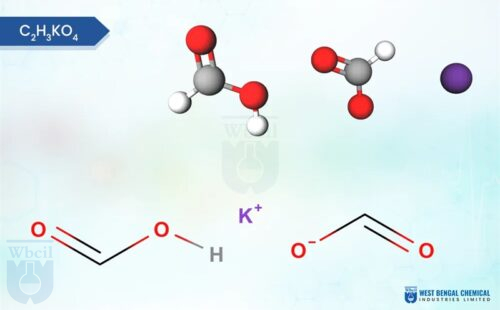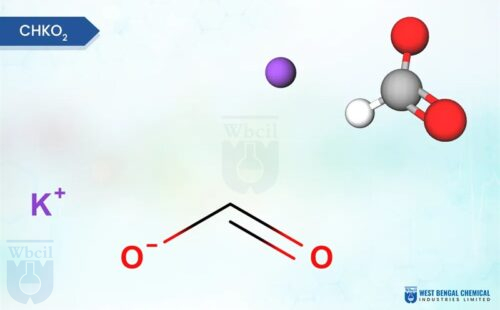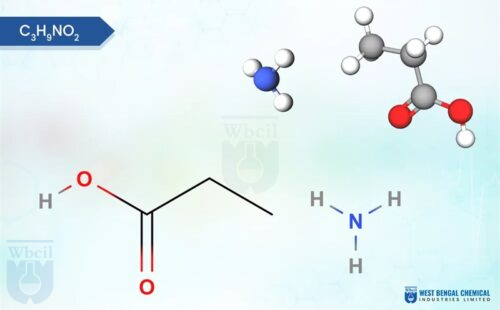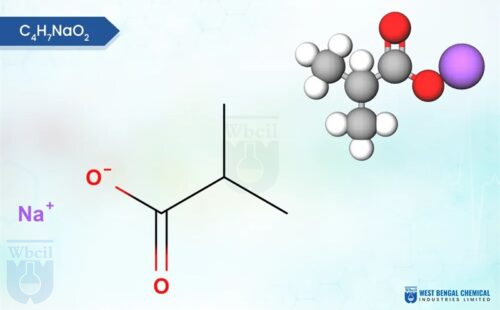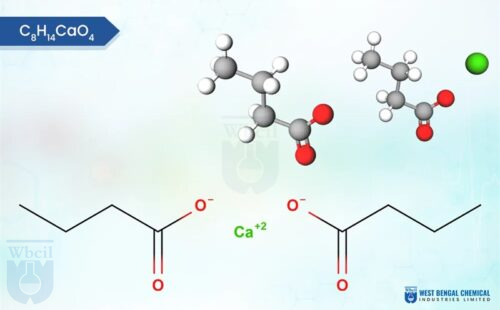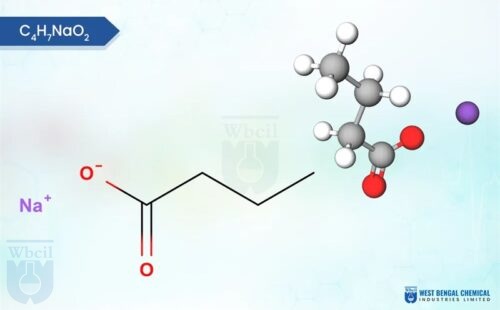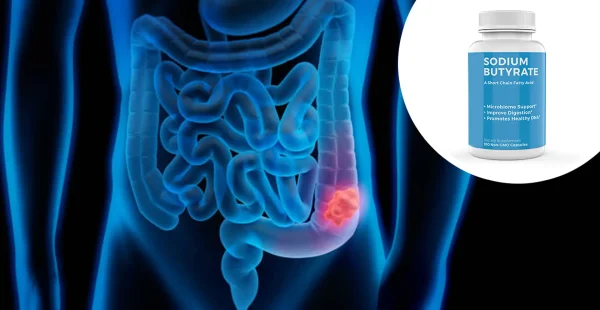Sodium Propionate
-
Product Name:
Sodium Propionate
-
Molecular Formula:
C3H5NaO2
-
Molecular Weight:
96.06 g/mol
-
CAS No.:
137-40-6
-
HSN Code:
230120
-
CID Code:
2723816
-
Shelf Life:
3 years - 20°C powder
-
ATC Code (WHO)
S01AX10, QA16QA02
-
DrugBank ID
DBSALT002690
-
ChemSpider ID
8399
-
UNII No.
DK6Y9P42IN
- USP
- IUPAC Names
- Synonyms
- MSDS
USP of Sodium Propionate
- Sodium propionate is effective at inhibiting the growth of molds and fungi in animal feed.
- Sodium propionate itself is not a direct source of nutrition, its role in preserving feed quality indirectly contribute to better animal performance.
IUPAC Names of Sodium Propionate
sodium;propanoate
Synonyms of Sodium Propionate
- Sodium Propionate
- 137-40-6
- Sodium propanoate
- Propionic acid sodium salt
- Propanoic acid, sodium salt
- Sodium hydrogen dipropionate
- sodium;propanoate
- Sodium propionate anhydrous
- Sodium dipropionate
- Propanoic acid, sodium salt (1:1)
- Propionic acid sodium
- CAS-137-40-6
- DK6Y9P42IN
- UNII-DK6Y9P42IN
MSDS of Sodium Propionate
Download MSDS PDFChemical Product and Company Identification
- Product Name: Sodium Propionate
- Product Code: SOPNL98
- Relevant identified uses of the substance or mixture and uses advised against Identified uses: Laboratory chemicals, Manufacture of substances
First Aid Measures
- Eye Contact: Check for and remove any contact lenses. In case of contact, immediately flush eyes with plenty of water for at least 15 minutes. Cold water may be used. Get medical attention.
- Skin Contact: In case of contact, immediately flush skin with plenty of water. Cover the irritated skin with an emollient. Remove contaminated clothing and shoes. Cold water may be used. Wash clothing before reuse. Thoroughly clean shoes before reuse. Get medical attention.
- Serious Skin Contact: Wash with a disinfectant soap and cover the contaminated skin with an anti-bacterial cream. Seek medical attention.
- Inhalation: If inhaled, remove to fresh air. If not breathing, give artificial respiration. If breathing is difficult, give oxygen. Get medical attention.
- Serious Inhalation: Not available.
- Ingestion: Do NOT induce vomiting unless directed to do so by medical personnel. Never give anything by mouth to an unconscious person. Loosen tight clothing such as a collar, tie, belt or waistband. Get medical attention if symptoms appear.
Fire-Fighting Measures
- Flammability of the Product: May be combustible at high temperature.
- Auto-Ignition Temperature: Not available.
- Flash Points: > 250 °C / > 482°F
- Flammable Limits: Not available.
- Products of Combustion: Some metallic oxides.
- Fire Hazards in Presence of Various Substances: Slightly flammable to flammable in presence of heat.
- Explosion Hazards in Presence of Various Substances: Risks of explosion of the product in presence of mechanical impact: Not available. Slightly explosive in presence of open flames and sparks.
Exposure Controls / Personal Protection
- Engineering Controls: Use process enclosures, local exhaust ventilation, or other engineering controls to keep airborne levels below recommended exposure limits. If user operations generate dust, fume or mist, use ventilation to keep exposure to airborne contaminants below the exposure limit.
- Personal Protection: Splash goggles. Lab coat. Dust respirator. Be sure to use an approved/certified respirator or equivalent. Gloves.
- Personal Protection in Case of a Large Spill: Splash goggles. Full suit. Dust respirator. Boots. Gloves. A self-contained breathing apparatus should be used to avoid inhalation of the product. Suggested protective clothing might not be sufficient; consult a specialist BEFORE handling this product.
- Exposure Limits: Not available.
Physical and Chemical Properties
- Appearance Form Form: Free flowing powder
- Color: White
- Odour: no data available
- pH of a 10% w/v Suspension: 5.0-8.5
- Melting point/freezing point: no data available
- Initial boiling point and boiling range: no data available
- Sublimation Temperature: no data available
- Density: no data available
- Vapour pressure: no data available
- Vapour density: no data available
- Refractive density: no data available
- Water solubility: no data available
- Decomposition temperature: no data available
- Viscosity: no data available
- Other safety information: No data available
References
- https://whmis.org/sds/
- https://www.osha.gov/sites/default/files/publications/OSHA3514.pdf
- https://reachonline.eu/reach/en/annex-ii.html
- https://www.cdc.gov/niosh/npg/
- https://pubchem.ncbi.nlm.nih.gov/compound/Sodium-propionate
- https://echa.europa.eu/da/registration-dossier/-/registered-dossier/22334
- https://en.wikipedia.org/wiki/Sodium_propionate
- https://www.chemicalbook.com/ChemicalProductProperty_EN_CB9290129.htm#:~:text=Sodium%20Propionate%20is%20an%20antimicrobial,acid%20odor%2C%20and%20is%20deliquescent

If you are interested on Sodium Propionate, then
Description of Sodium Propionate
Sodium propionate is the sodium salt of propionic acid. It belongs to a group of compounds known as propionates. It is a type of food additive that is commonly used in animal nutrition. In animal nutrition, sodium propionate is primarily used as a preservative and a source of energy for livestock and poultry.
Application of Sodium Propionate
- Acts as an effective preservative in animal feed, inhibiting the growth of mold and fungi, thereby extending the shelf life and preserving the quality of the feed
- Serves as a readily available energy source for ruminants, supporting their metabolic needs and overall health, particularly during periods of high energy demand
- Helps in maintaining the health of the gastrointestinal tract in animals
- In dairy cows, it is used to prevent ketosis, especially during early lactation, by providing an additional energy source.
- Strengthening the immune system in animals, aiding them in resisting infections and diseases more effectively
If you are interested on Sodium Propionate, then
Related Products
Related Blogs of Sodium Propionate

Introduction Our digestive tract includes the mouth, esophagus, stomach, small intestine and large intestine. Inflammatory bowel disease occurs due to…...

What is Sodium Butyrate? The sodium salt of butyric acid with a chemical formula of Na(C3H7COO) is known for its…...


